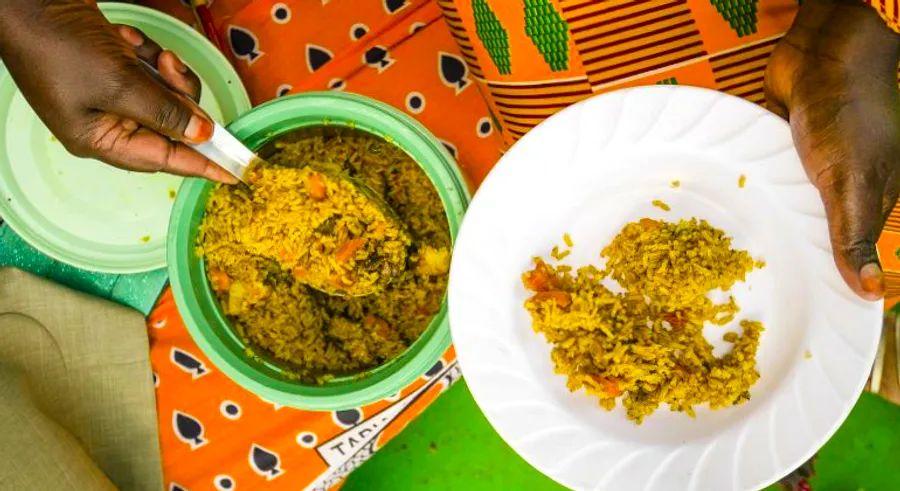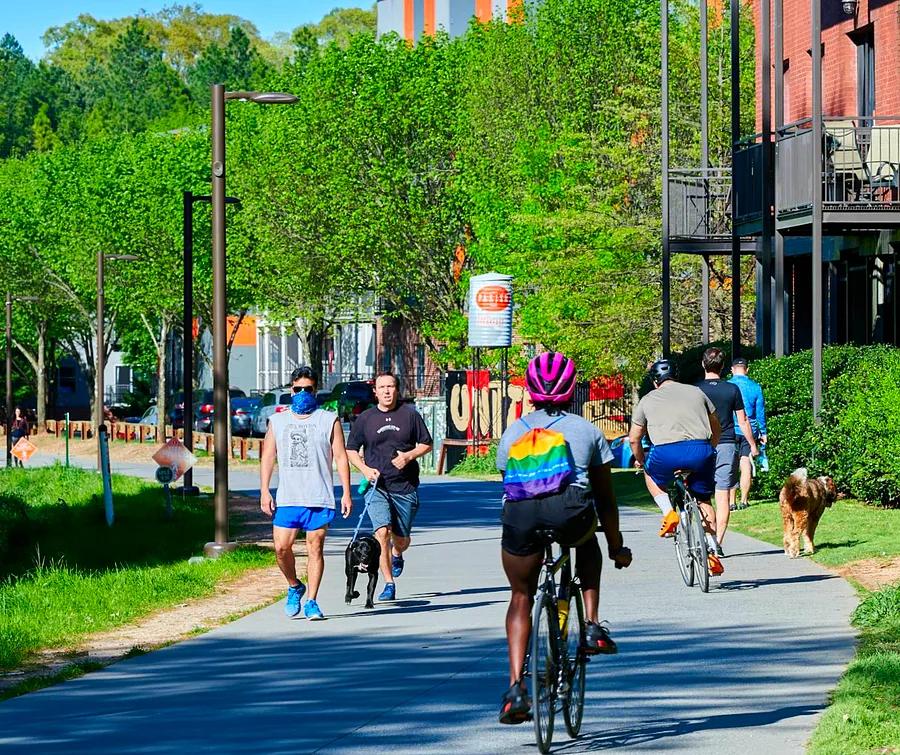Kenya’s finest cuisine is a vibrant blend of diverse flavors

“Food tastes so much better when eaten by hand,” says Nairobi-based food blogger Kaluhi Adagala, picking apart a freshly grilled tilapia with her fingers. “It’s a personal, hands-on connection between you and the dish.”
Adagala sits at the Delta Plaza location of Nyama Mama, a modern Kenyan eatery adorned with bold African wax prints, surrounded by a vibrant spread of fish, meats, samosas, cornmeal, and greens, all prepared by executive chef Lesiamon Sempele.
Nairobi, the dynamic and bustling heart of Kenya, is a city of constant transformation, a stark contrast to the timeless tranquility of the country’s vast savannahs, lakes, mountains, and Indian Ocean coast.
Adagala is here to share her insights on the must-try dishes for anyone visiting Kenya, a country rich in cultural and culinary diversity.
“I believe the landscape plays a major role in shaping the cuisine of our people,” says Adagala. “In regions like Turkana or the Masai Mara, their traditional dishes are deeply influenced by the livestock they raise. Coastal communities, on the other hand, have cuisines shaped by their long-standing trade with Arabs and Indians.”
Meat
“Meat is a big deal here!” chuckles Adagala. “When there’s a gathering or celebration, you can bet that nyama choma – Swahili for roasted meat, usually goat or beef – will be the highlight.”
“It varies depending on the region,” Adagala explains. “In the west, we might roast goat with eucalyptus wood, but in Nairobi, it’s typically just a standard roast served with kachumbari.”
Kachumbari (or salsa) “pairs perfectly with almost anything,” she says. “It’s incredibly easy to make. I like to add tomatoes, a squeeze of lime, onions, and a touch of chili.”
Ugali, a dense cornmeal dish resembling polenta, is another key side dish. “It’s our staple food,” Adagala says, though she admits it’s “an acquired taste.” While outsiders may find it bland, for Kenyans, it’s the ultimate comfort food. Paired with the right spicy sides, it transforms into a flavorful experience.
“Pair ugali with some vegetables and a hearty meat dish, like perfectly cooked tilapia or matumbo, to balance the meal,” recommends Adagala.
Matumbo, also known as tripe, “is dark and looks almost like a towel,” but when served in bao at Nyama Mama’s Asian fusion spin on a Kenyan classic, it’s some of the most delicious offal you’ll ever taste.
“We’re not wasteful in the least,” says Adagala. It’s not just offal that’s used. When a goat is slaughtered for nyama choma, its blood may be incorporated into mutura, a spicy sausage made with offal, garlic, ginger, chili, and coriander, all held together by the rich red blood.
Fish and chicken
“Tilapia is the most widely enjoyed fish in Kenya,” says Adagala, noting that it’s traditionally fried. The expansive Lake Victoria, shared with Uganda and Tanzania, is the primary source of freshwater fish in the region.
Uduvi (shrimp) and kamba (prawns) are especially flavorful when prepared wa kupaka, meaning “with a rich coconut curry sauce.” Free-range chicken, known as kuku kienjeyi, is also a perfect candidate for this coconut treatment.
Pulses and vegetables
While nyama choma may be the go-to dish for celebrations, “Kenyan cuisine at its core is actually quite vegetarian,” Adagala explains.
One of Kenya’s beloved vegetable staples is sukuma wiki, a dish of collard greens cooked with onions and spices. The name literally translates to “end of the week,” reflecting a food culture traditionally focused more on sustenance than indulgence.
“Mboga is the general term for vegetables,” says Adagala. “We have a variety of traditional vegetables that are especially popular in the western part of the country, where I’m from.” Kanzira refers to African kale, managu is African nightshade, and terere is similar to wild spinach.
Adagala suggests trying githeri, a hearty casserole made with maize and beans, often served with avocado on the side. Other well-loved pulses include ndengu (mung beans) and njahi (black beans).
No cuisine is complete without a starchy potato dish, and in Kenya, that means viazi karai (fried potatoes) or viazi via ryo (potatoes cooked in a tomato-coconut sauce). Mukimo is a colorful mash of potatoes and green vegetables, while irio is a variation with peas and corn.
Then there’s matoke, a type of plantain. “It’s starchier and a bit less sweet,” says Adagala, “and it’s perfect for stews.”
Indian and Arabic influence
Kenya is home to a sizable Indian community, a result of migration that began in the late 19th century when indentured workers were brought from British-controlled India to help build the Kenya-Uganda railway.
Kenyan cuisine features many Swahili staples that will be familiar to lovers of Indian food, such as chapati, samosas, bhajia, biryani, and pilau, though they all have a distinctive local twist.
For example, Kenyan chapati are made using white or all-purpose flour, then fried in vegetable oil or ghee to give them their signature texture and flavor.
“For special occasions, we often make pilau, and masala fries (spicy French fries), because they add a festive touch,” says Adagala.
The cuisine along Kenya’s eastern coast is shaped by the vibrant mix of ideas and ingredients that have come through trade with India and Arabic countries.
“The people along the coast are more adventurous with spices, bold and confident in their use,” explains Adagala. “But as you move inland, the food becomes simpler. People prefer to taste the natural flavors of the ingredients. For them, spices can be seen as an unnecessary distraction.”
“In the west, we also prefer simple food. The main difference is that we use more traditional salts. We’re fond of smoking and roasting our meats, often with specific types of wood for added flavor.”
Sweet treats and beverages
Mendazi, which are samosa-shaped but have the taste of donuts, make a perfect breakfast snack. Vibibi, rice and coconut pancakes, are another light and fluffy delight to start your day.
And, of course, you need a drink to go with all of that.
“We may export some of the finest coffee in the world, but what Kenyans truly love is tea,” says Adagala. Chai masala, a lightly fragrant, slightly sweet, milky tea, is a staple breakfast drink.
Tea is often enjoyed at breakfast alongside nduma, a starchy tuber that’s simply boiled with a pinch of salt.
Alternatively, Adagala prepares it with a crispy outer layer:
Falooda, a milkshake with Indian roots, is another Asian import that has found a home in Kenya.
On the streets, sugar cane is a popular snack. Kenyans of all ages slice it up and enjoy it by sucking on it like a natural straw.
“For the older generation, there’s a traditional alcoholic drink called busaa, made from fermented sorghum flour,” says Adagala. “You place the flour or seeds in a large pot, add water and yeast, and let it ferment.” Once ready, men typically “gather around the pot and drink together.”
Where to eat in Nairobi
Nyama Mama is considered one of the top Kenyan restaurants in Nairobi, according to Adagala. “It’s very popular because it takes traditional Kenyan dishes and gives them a modern twist.”
Adagala also recommends Swahili Plate in the Central Business District for straightforward, delicious local fare. For nyama choma, she suggests Roadhouse Grill and Carnivore. “Carnivore serves everything from beef to crocodile to duck. You name it!” she says.
For Kenyan-style gourmet burgers, her top pick is Mama Rocks, located at the trendy The Alchemist creative hub.
Nyama Mama Delta, located at Delta Towers in Nairobi, Kenya; phone: +254 704 567567
Roadhouse Grill, situated on Dennis Pritt Road in Nairobi, Kenya; phone: +254 720 768663
Carnivore, located on Langata Road near Wilson Airport in Nairobi, Kenya; phone: +254 722 204647
Swahili Plate, on Muindi Mbingu Street in Nairobi, Kenya; phone: +254 772 435765
Mama Rocks at The Alchemist, located on Parklands Road in Nairobi, Kenya; phone: +254 705 155 155
For more insights from Kaluhi Adagala, check out her blog Kaluhi’s Kitchen, and don’t forget to follow her on Instagram and YouTube

1

2

3

4

5
Evaluation :
5/5